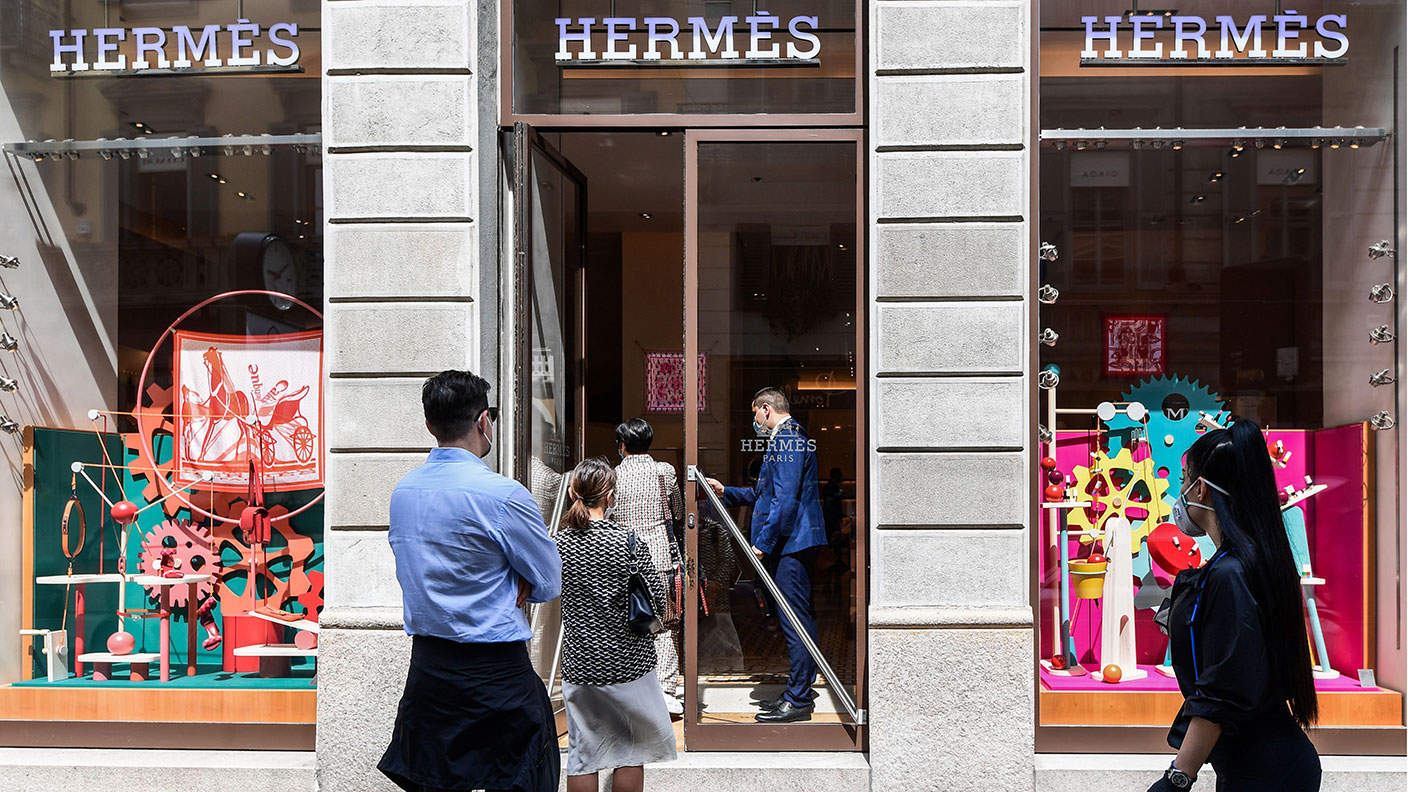Why it can pay to keep your investments in the family
Family-run businesses make up a huge percentage of the UK’s private companies. Buy into a listed family firm, and you’re likely to net a healthy return on your money, says Merryn Somerset Webb.


You’ve probably just spent an awful lot of time with your family. Some of you will want a break. Some of you will have cooked up ideas about how you might keep doing more together. And if boredom leads to innovation, my guess is that we are soon to see an explosion of family business start-ups. Even I have given in and am doing a podcast with my sister.
If one of these start-ups is yours, you won’t be alone: in the UK, family businesses make up about 28% of GDP. That said, you will probably fail. About 70% of family businesses vanish long before the siblings get to start arguing about whose oldest kid gets to take over.
However there is also an (outside) chance that you will make something special. Look to the listed sector and you will see what I mean. Around 20% of the MSCI All Country World Index (ACWI) is made up of companies that have family involvement, in the sense that a family holds 30% or more of the voting rights.
MoneyWeek
Subscribe to MoneyWeek today and get your first six magazine issues absolutely FREE

Sign up to Money Morning
Don't miss the latest investment and personal finances news, market analysis, plus money-saving tips with our free twice-daily newsletter
Don't miss the latest investment and personal finances news, market analysis, plus money-saving tips with our free twice-daily newsletter
Drop that to 20% and you find that in Europe around 40% of companies with $1bn plus sales are family firms. Think Hermès, H&M, Schroders, L’Oréal, Estée Lauder, and Roche. And these survivors are not just plentiful: they are good.
Every study I know suggests that listed family firms outperform. Credit Suisse produced a report in 2018 which concluded that family firms had outperformed by around 4% a year since 2006. Studies from UBS show a similar dynamic among mid-caps in particular and one from Hargreaves Lansdown reckons that “insider ownership” of even 5% makes a difference to the performance of smaller companies.
Finally, a new report from Pictet gives us some recent stats to add to our evidence pile. Back-testing what they define as family businesses (good daily liquidity, family ownership of 30% of the voting rights, and where the company is in emerging markets it should have a minimum market cap of $10bn) they found that family firms outperformed the global market by 46% from 2007 to 2019.
Much number fiddling later, no one has been able to come up with a clear explanation for this. You can’t, for example, say it is because family businesses are more exposed to recently outperforming areas such as US technology than the average company. They aren’t. This leads to the idea that the family involvement in itself leads to outperformance. How?
What makes a family firm different?
It’s partly about “skin in the game”. It’s obvious that if you have a stake in something your incentive is to at least maintain the value of that stake. But there is more to it than that. Attempts to replicate the sense of ownership via the chucking of vastly valuable piles of options into the open wallets of non-founding chief executives haven’t exactly been a huge success when it comes to the creation of long-term corporate value.
The difference may be that family owners have a different kind of wealth to think about – a type of social wealth reflected in the way that their reputation and status are tied up in their firms. Your average executive may also have his sense of worth tied up in his work, but more in the sense of being important and getting pleasantly rich at any old company (check out the CVs of some of those at the top – they get around) rather than from one company in particular.
Family companies often end up with a stronger sense of social corporate responsibility and long-term stewardship than others. This, so the idea goes, gives a growth focus but a responsible one. Think lots of R&D and low leverage, something reflected in their generally lower dividend payments. The money other firms might pay out to allow chief executives to bask in temporary shareholder adoration is reinvested by family firms to make sure their payouts are sustainable in the long term. Their long-term vision extends beyond their next option vesting period.
All this results in a bias to quality and growth, one reason perhaps why these firms recovered so well from the 2008 crisis. And it is also why we should be looking at them now, when we have been firmly reminded that the first thing we should look for in our investments is their ability to weather a crisis.
What to buy
This is not a perfect sector – you need to watch out for bad governance in the form of nepotism, lack of focused family ownership (too many family owners is as bad as no family owners), clashes over succession (the passing of the company to the second generation is a risky moment) or, in some cases, the confusion of what belongs to the family and what belongs to the business. Still, if you are going to put money anywhere, you will want to keep in mind this year’s investing buzzword – “resilience” – and family companies may well fit the bill.
Pictet, itself a family business, is currently drumming up interest in its still small Pictet Family Fund – hence its research. This is global, diversified across sectors, concentrated (with around 50 holdings) and focused on governance, so as to avoid the pitfalls I mention above.
The only thing you might worry about with it is valuations. The Pictet portfolio comes with an off-putting average forward price/earnings ratio of 28.5 times, which is very expensive even by today’s standards, and a yield of a mere 1.04%, which is peanuts given you can get 2.5% in Japan. However, Pictet reckons it is worth paying for the low levels of debt, the significantly higher return on equity and the higher growth forecasts in the group. Add the latter in and you get a price/earnings growth ratio of 1.7 times for the Pictet portfolio against 3.06 times for the global index.
If that doesn’t convince you, look for funds that, while not designed to invest in family companies, are interested in them. AVI has a fund (sadly with a minimum investment of €100,000) that specialises in undervalued family holding companies. Of more interest might be the AVI Global Trust (LSE: AGT), where the top holdings include several family firms.
On a slightly different note, for a one stop investment shop with family characteristics, you might look at some of the investment trusts which have large family shareholdings. I hold shares in the Caledonia Investment Trust (LSE: CLDN) (the investment vehicle for the Cayzer family) and RIT Capital Partners (LSE: RCP) (the Rothschilds). Brunner Investment Trust (LSE: BUT) and Majedie Investments (LSE: MAJE) are also worth looking at. My guess is that all these will all be around long after our lockdown business ideas have been forgotten.
• This article was first published in the Financial Times
Get the latest financial news, insights and expert analysis from our award-winning MoneyWeek team, to help you understand what really matters when it comes to your finances.
Merryn Somerset Webb started her career in Tokyo at public broadcaster NHK before becoming a Japanese equity broker at what was then Warburgs. She went on to work at SBC and UBS without moving from her desk in Kamiyacho (it was the age of mergers).
After five years in Japan she returned to work in the UK at Paribas. This soon became BNP Paribas. Again, no desk move was required. On leaving the City, Merryn helped The Week magazine with its City pages before becoming the launch editor of MoneyWeek in 2000 and taking on columns first in the Sunday Times and then in 2009 in the Financial Times
Twenty years on, MoneyWeek is the best-selling financial magazine in the UK. Merryn was its Editor in Chief until 2022. She is now a senior columnist at Bloomberg and host of the Merryn Talks Money podcast - but still writes for Moneyweek monthly.
Merryn is also is a non executive director of two investment trusts – BlackRock Throgmorton, and the Murray Income Investment Trust.
-
 How gifting money this Christmas could lower your inheritance tax bill
How gifting money this Christmas could lower your inheritance tax billCash is an easy and quick present to give over Christmas – and it could protect some of your estate from the taxman down the line
-
 £100 contactless card limit to be lifted
£100 contactless card limit to be liftedConsumers will be able to set their own contactless limits from March 2026, under new rules from the Financial Conduct Authority
-
 What's behind the big shift in Japanese government bonds?
What's behind the big shift in Japanese government bonds?Rising long-term Japanese government bond yields point to growing nervousness about the future – and not just inflation
-
 Halifax: House price slump continues as prices slide for the sixth consecutive month
Halifax: House price slump continues as prices slide for the sixth consecutive monthUK house prices fell again in September as buyers returned, but the slowdown was not as fast as anticipated, latest Halifax data shows. Where are house prices falling the most?
-
 Rents hit a record high - but is the opportunity for buy-to-let investors still strong?
Rents hit a record high - but is the opportunity for buy-to-let investors still strong?UK rent prices have hit a record high with the average hitting over £1,200 a month says Rightmove. Are there still opportunities in buy-to-let?
-
 Pension savers turn to gold investments
Pension savers turn to gold investmentsInvestors are racing to buy gold to protect their pensions from a stock market correction and high inflation, experts say
-
 Where to find the best returns from student accommodation
Where to find the best returns from student accommodationStudent accommodation can be a lucrative investment if you know where to look.
-
 The world’s best bargain stocks
The world’s best bargain stocksSearching for bargain stocks with Alec Cutler of the Orbis Global Balanced Fund, who tells Andrew Van Sickle which sectors are being overlooked.
-
 Revealed: the cheapest cities to own a home in Britain
Revealed: the cheapest cities to own a home in BritainNew research reveals the cheapest cities to own a home, taking account of mortgage payments, utility bills and council tax
-
 UK recession: How to protect your portfolio
UK recession: How to protect your portfolioAs the UK recession is confirmed, we look at ways to protect your wealth.
